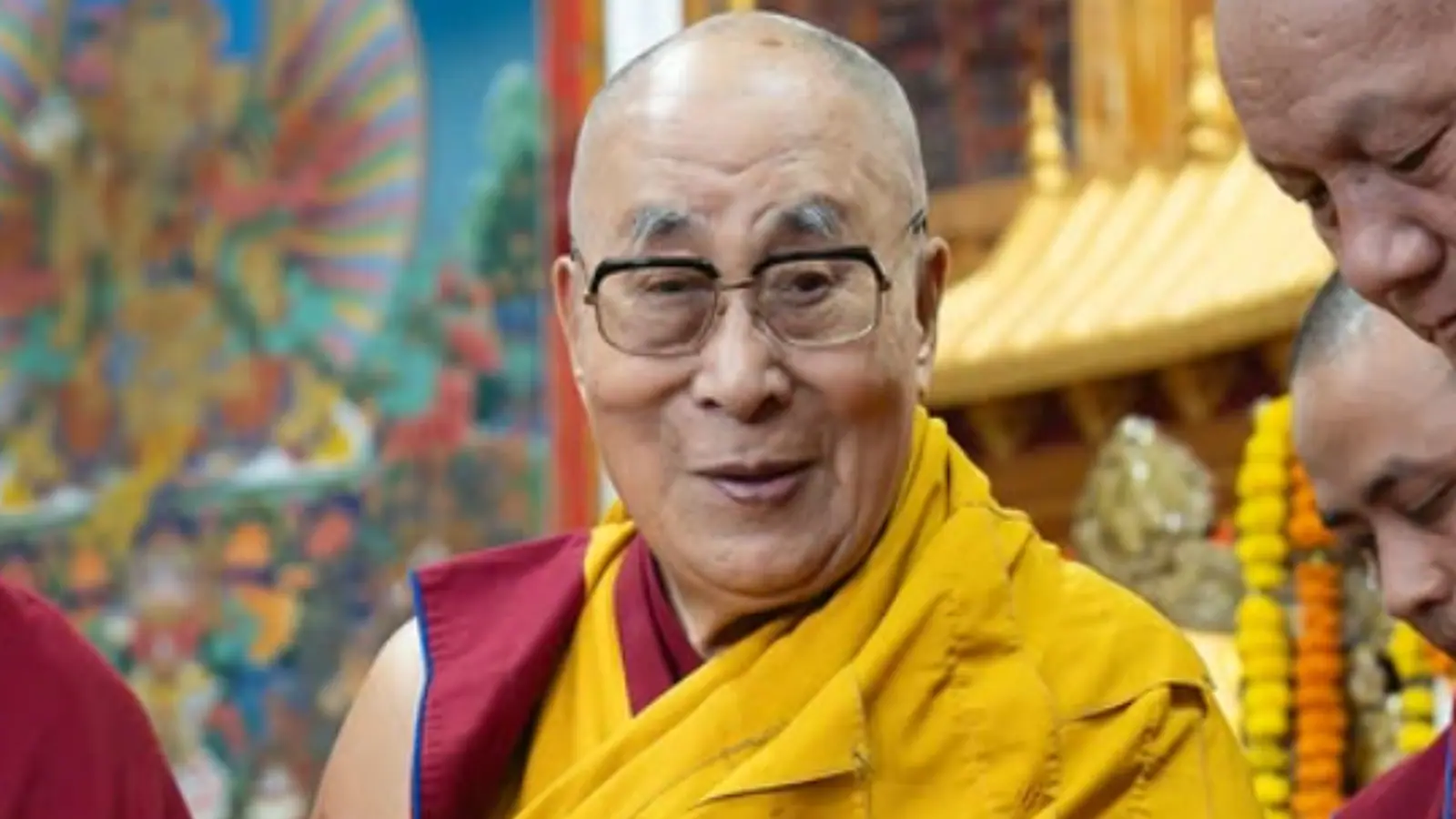By News18
The Dalai Lama has announced that he will have a successor after his death. In a video message shared on July 2, he said that the 600-year-old tradition of the spiritual leader will continue. This news has brought relief to Tibetans and supporters around the world who were worried about what would happen next.
This decision also matters politically as China, which took control of Tibet in the 1950s, considers the Dalai Lama as a separatist. It has often claimed it has the right to choose his successor. But the Dalai Lama made it clear that only the Gaden Phodrang Trust, which he established, has the authority to recognise his reincarnation. “No-one else has any such authority to interfere,” he said in his message from Dharamshala, Himachal Pradesh.
Who Is Dalai Lama — Tenzin Gyatso?
The 14th Dalai Lama was born on July 6, 1935 as Lhamo Dhondup to a farming family in a small village in northeastern Tibet. At the age of two, he was identified as the reincarnation of the 13th Dalai Lama, Thubten Gyatso, who had died in 1933.
In 1940, Thubten Gyatso was taken to the Potala Palace in Lhasa where he was formally declared the spiritual leader of Tibet. He was also given a new name – Tenzin Gyatso. His religious training began there. He studied subjects like logic, grammar, medicine and Buddhist philosophy.
In 1989, he was awarded the Nobel Peace Prize for his peaceful efforts to protect Tibetan culture and identity. Though he is one of the most recognised spiritual leaders in the world, on his website, he describes himself simply as “a simple Buddhist monk.”
Why Did The Dalai Lama Flee Tibet?
In 1959, Tibet saw a major turning point. On March 10, thousands of Tibetans gathered outside the Dalai Lama’s palace in Lhasa. They feared that a Chinese invitation for the Dalai Lama to attend a cultural event might be a trap to detain or harm him.
What started as an act of protection turned into mass protests against Chinese control over Tibet which had begun in 1950. In response, the Chinese army launched a brutal crackdown. Thousands of Tibetans are believed to have lost their lives in the violence.
The Dalai Lama decided to flee, a decision he said was based on divine orders from his personal oracle. This escape is one of the most important moments in Tibetan history. Exiled Tibetans remember it as their National Uprising Day.
How Did He End Up In India?
As the tensions kept rising, on March 17, 1959, the Dalai Lama, disguised as a soldier, slipped out at night with a group of his followers. After a difficult 15-day journey across the Himalayas, he reached the Indian border.
According to the Dalai Lama’s website, India granted him asylum. He was first taken to Bomdila, a town in Arunachal Pradesh. The Dalai Lama also met then Prime Minister Jawaharlal Nehru and the two discussed how to rehabilitate Tibetan refugees.
“Realizing the importance of modern education for the children of Tibetan refugees, His Holiness impressed upon Nehru the need to create a Special Section for Tibetan Education within the Indian Ministry of Education. The Indian Government agreed to bear all the expenses for setting up the schools for the Tibetan children,” the website mentioned.
The Dalai Lama later settled in Dharamshala, Himachal Pradesh, where he has lived in exile ever since.
What Does The Dalai Lama Mean To Tibetans?
The Dalai Lama is the highest spiritual leader in Tibetan Buddhism. Tibetans believe he is the living form of Avalokiteshvara, also known as Chenrezig, the patron saint of Tibet.
There have been 14 Dalai Lamas since the 15th century. Tibetan Buddhists believe that when one Dalai Lama dies, he is reborn as another person. A detailed and traditional process is followed to find his reincarnation.
Since 1642, the Dalai Lama held both spiritual and political power in Tibet. But that changed with the current Dalai Lama. He chose to step away from political leadership and handed over those duties to a democratically elected Tibetan government-in-exile.
Even though he no longer holds a political role, he remains a powerful symbol for Tibetans specially those living in exile. For them, he stands not only as a religious guide but also as a sign of hope and the dream of one day returning to their homeland.
